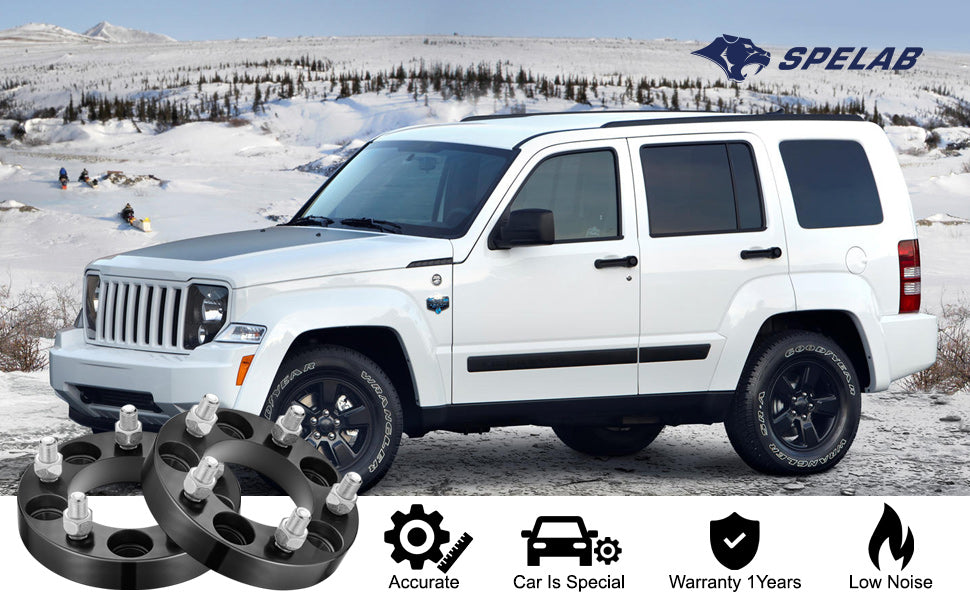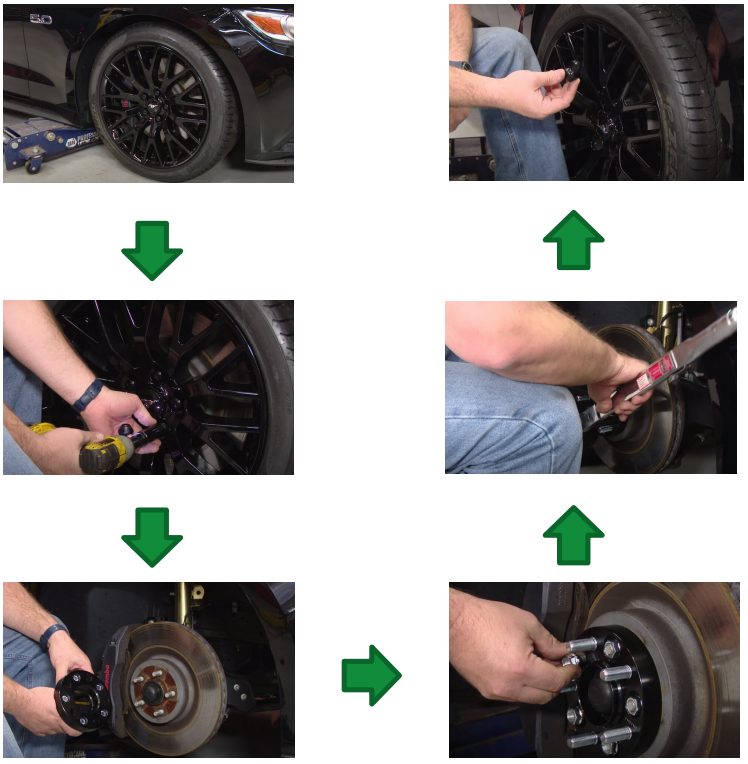Wheel Spacers for 1984-2012 Jeep Cherokee Wrangler TJ YJ / 1955-2014 Ford / 1967-1969 Mercury 4PCS

Fitment:
1996 Jeep Wrangler JK
1984-2001 Jeep Cherokee
1986-1992 Jeep Comanche
1993-1998 Jeep Grand Cherokee
2007-2012 Jeep Liberty
1987-1995 Jeep Wrangler JK
1997-2006 Jeep Wrangler JK
1992-2011 Ford Crown Victoria
2007-2013 Ford Edge
1991-2010 Ford Explorer
1955-1967 Ford Fairlane
1963-1970 Ford Falcon
1961-1967 Ford Galaxie
1967-1974 Ford Galaxie 500
1964-1973 Ford Mustang
1979-2014 Ford Mustang
1983-2011 Ford Ranger
2010-2014 Ford Taurus
2003-2005 Ford Aviator
1991-2011 Ford Town Car
1967-1969 Mercury Cougar

Features:
SPELAB Wheel spacers are used to widen the track width of a vehicle by creating additional space between the wheel and the hub assembly. Some potential benefits of using wheel spacers include:
1. Improved Appearance: Wheel spacers can give your vehicle a wider stance, which can enhance the overall appearance of the vehicle.
2. Better Handling: A wider track width can improve handling by increasing stability and reducing body roll, particularly in high-speed turns.
3. Clearance for Larger Wheels or Brakes: Wheel spacers can create additional clearance between the wheel and brake caliper, allowing for the installation of larger wheels or brakes.
4. Correcting Offset: If your wheels have an incorrect offset, wheel spacers can be used to adjust the positioning of the wheel for better fitment.
It is important to note that using wheel spacers can also have some potential drawbacks, such as increased stress on the wheel bearings and suspension components, and potential rubbing against fenders or other components. It is important to properly install and maintain wheel spacers to minimize these risks. It is also important to ensure that the wheel spacers you choose are compatible with your vehicle and intended use.

Installation Note:
Step 1: Don't use an impact wrench. Use a jack or lift to raise the vehicle so that the tires are in the air.
Step 2: Remove the wheels/tires
Step 3: Spray degreaser on lug studs
It's not required, but it's a good idea. You want to make sure the wheel spacers are resting on a clean, smooth surface. If there is rust or corrosion, take a wire brush and clean it.
Step 4: Put the wheel spacers in place
Tighten by hand, but do not tighten the bolts. Just snap them all into place and tighten slightly.
Step 5: Tighten the bolts according to the specification
Once all the bolts are in place, use a torque wrench to tighten them to the manufacturer's recommended specifications.
Step 6: Reinstall the wheel onto the assembly/lug studs
Secure and hand-tighten each lug nut before tightening them all the way down. Tighten them in a star pattern to ensure the load is not applied unevenly.


